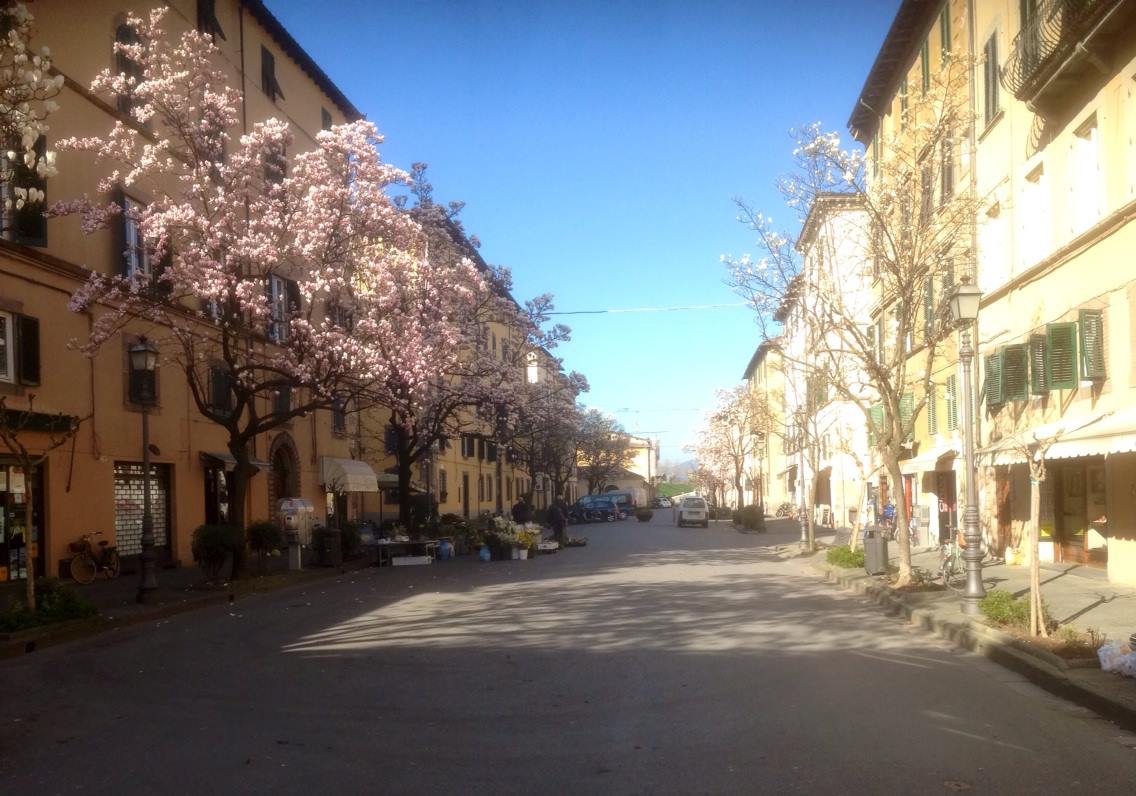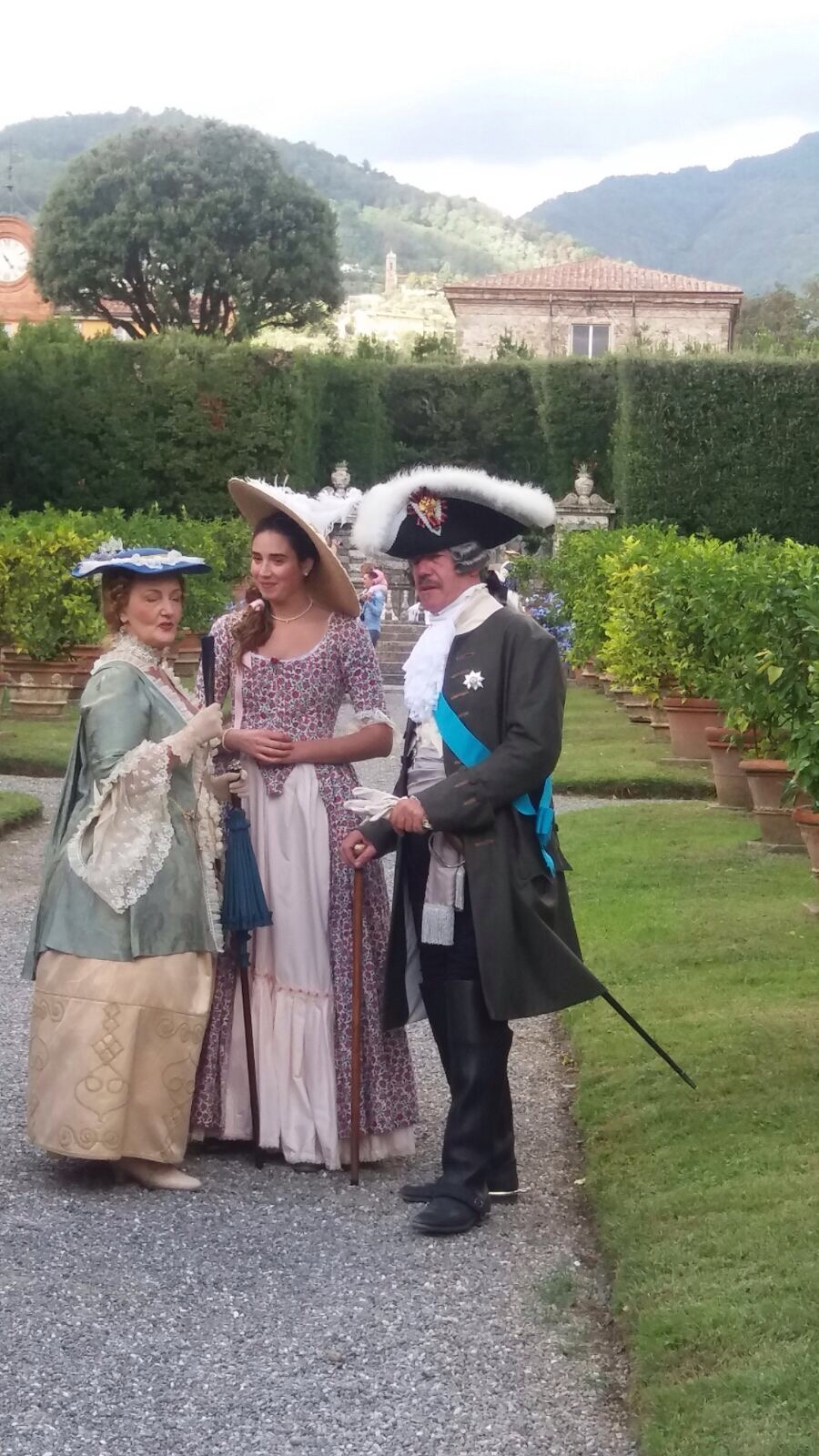
What would Elisa Bonaparte, Princess of Lucca, Massa, and Piombino and younger sister of Napoleon, have said if she had known that they would be talking about her on TV in Lucca after two centuries? And why? Because of military campaigns? Economic and social reforms in the wake of the French Revolution? No, ladies and gentlemen. It is in regard to a much more light-hearted reason, might I say “fragrant”.
This powerful, modern, and revolutionary young woman, among other things, introduced new varieties of plants and flowers to Lucca and Tuscany. On February 21, a conference in regard to this subject was held in the rooms where Elisa’s court theatre used to be in Palazzo Ducale in Lucca. The event was filmed by a Tuscan network, Channel 50, and sponsored by the Filippo Mazzei Cultural Circle of Pisa.
The guests were Roberta Martinelli, Simonetta Giurlani Pardini, Paolo Emilio Tomei, professor of Botany at the University of Pisa, representing the association Napoleone ed Elisa: da Parigi alla Toscana, and myself, Gabriele Calabrese, on behalf of the tourism association, Turislucca.
The passion and love for history of the participants underlined how intriguing this subject is despite how little is known about it. Few people are aware that Napoleon, in the wake of the scientific and geographic discoveries of the Illuminists, organized an expedition in 1800. Two French brigs sailed as far as Australia and a team of naturalists took many samples of species of plants and animals to bring back to France. Many of these plants, considered common today like wisteria, mimosa, the plane tree and the tulip tree, upon their arrival, spread to many European countries thanks to Napoleon’s military conquests throughout Europe. The plants were greatly admired by all classes of society.
Up to then, only a restricted circle of the scholarly and nobles had had the privilege of planting rare and exotic botanical species in their gardens. They would jealously raise and care for them and rarely would they exchange or give cuttings to others. So the plants would be confined to the “secret” gardens of very few.

The small Republic of Lucca was no exception as witnessed by the German, Georg Christoph Martini. He was a traveler, painter, and scholar who was a well-liked guest among the local merchant oligarchy. In his diary, he often described the private gardens of the homes and estates of the nobility of Lucca. “We went to the property of Mister Giacomo Prenzi who owned a beautiful villa with a charming garden. In the garden of Fiorentini [Francesco Maria Fiorentini], there are rare plants like the “serpentaria major” that has a trunk checkered like a snakeskin and as thick as an arm. Its fruit looks like a canine “member”. A pepper tree, Spanish canes, and other plants also grow there.”

During the lively television discussion, we also spoke about species that were introduced and distributed in Tuscany by Elisa when she became the owner of the beautiful estate, Villa Orsetti, immediately renamed Villa Reale [Royal Villa] of Marlia. The immense park of the property was created by also annexing gardens of other nearby estates such as that of Bishop Guinigi. It became the breeding ground for many species of trees and plants. The first to be introduced was the “queen” of them all, the camellia. It was imported directly from the Royal Palace of Caserta (Reggia di Caserta) and then widely distributed to all the other villas in the area. Still today, in the territory of Lucca, in particular in the Capannori area (the hills of Sant’Andrea di Compito), there is an annual Exhibit, held in March, where hundreds of historic camellias can be viewed by visitors.

Another area that was created to host new species was the Botanical Garden. The location chosen was an open space inside the Walls near the Liberty bastion where soccer [football] used to be played. This is the second oldest botanical garden in Tuscany; the oldest is in nearby Pisa. The Walls were considered a natural extension of the garden so when they were transformed from a defensive structure to a park with a promenade, new varieties of trees were planted on the top: horse chestnut trees, tulip trees, cedars of Lebanon, lime trees, magnolias, to name a few. Trees that had never before been seen by the people of Lucca. Trees that, in some cases, when in bloom, would release lovely, enticing fragrances into the air.
All this inspired the ladies participating in the television program to create an itinerary of scents that meanders through the streets of Lucca including the Walls and private and public gardens where these trees and plants are still present, visible, and … “smellable”.

The ladies also organized an exhibit in Palazzo Ducale, in the area where Elisa’s court theatre used to be, titled “Il naso e la storia” [The Nose and History]. With the aid of prints and paintings from the Napoleonic era, the exhibit walks you through the various stages that I have described but with a very special touch. In each room, there are glass vases containing the scents and fragrances that characterized the lives and history of the two female sovereigns of Lucca: Elisa Baciocchi Bonaparte and her successor, Maria Luisa Borbone [Bourbon]. On the one hand, you can smell the myrtle of Corsica, the citrus from the greenhouses of the Boboli Gardens in Florence, the grapes of the Tuscan coast. On the other, you can detect the incense of the churches of Lucca, the odor of the seaside of Viareggio, and the perfume of the fleur-de-lis (iris), which is the symbol of the House of Bourbon.
An immersion of the senses into the history of Tuscany and Europe during the first half of the 19th century.
And what does Turislucca have to do with all of this?
Inspired by this idea of the sense of smell, we have created tours led by our best professional guides. Thanks to our Look out Lucca project, it is possible to visit the park of Villa Reale of Marlia every Saturday afternoon from March to October. The property has recently undergone a restoration and is spectacular, so come and enjoy the history and stories regarding the illustrious people that, through time, have made it a place of extreme beauty and charm.
Hats off to Elisa and Maria Luisa! Two strong, determined women that, through their reforms and force of will, managed to transform the ancient city state of Lucca, tightly anchored to its past, for the better and move it into the future.
Pingback: Taking a stroll in Lucca with Maria Luisa Borbone | Turislucca